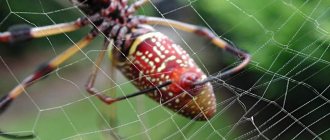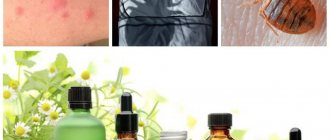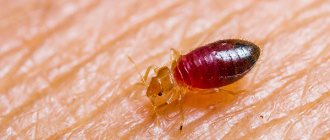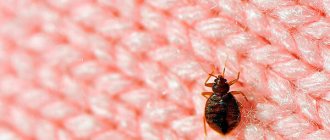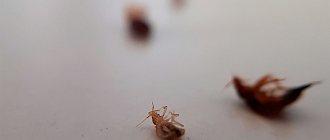What diseases and pests cause spider webs?
If you see gray-yellow caterpillars in a thick, massive, dense web, you have codling moth.
If you notice a white, dense web all over the tree, it's an apple worm . Its larvae suck the juices out of the plant, and then secrete a sticky substance that glues the buds, foliage, and buds together, resulting in the formation of a sooty fungus, which we see as a white cobweb.
If you find clearly visible cocoons on apple trees , you will understand that the trees have been affected by hawthorn. These are small caterpillars that curl up and overwinter in cocoons.
But when a spider mite appears, you will see a web in the form of transparent cloudy films with many black very small dots - these are eggs.
Apple tree in a web: what to do with spider moths?
This is a small snow-white butterfly ; it lays many eggs in the form of scutes, choosing young branches and protected places: on the forks of branches, at the base of the buds. Caterpillars spend the winter under the egg shells. In early spring they chew off the buds and then eat the leaves.
The leaves dry, and the caterpillars create a web in which 20-70 of them live. Afterwards they form pupae, and at the beginning of summer butterflies emerge from them and again lay up to 100 eggs under the scutes.
In the fall, take a magnifying glass and examine the young branches of the apple tree. If you see egg scales, scrape them off and burn them, cut off damaged and dry branches and burn them, and before winter, spray the apple tree with milk of lime.
In early spring, cut and burn the scutes. When the buds begin to bloom, and before the buds grow and separate, spray the trees with: a solution of 2 ml Decis per bucket of water or a composition of 4 ml Fitoverm per bucket of water, a solution of 10 ml Kinmiks per bucket of water, a solution of 10 ml Kemifos per bucket of water .
You can use the product by diluting 1 Inta-Vir tablet in a bucket of water .
If there are a very large number of insects, then treat the apple trees with a solution of 10 ml of fufanon per bucket of water.
If there are caterpillars in the web (black, gray, green)?
- If you find almost black caterpillars in the web, with bluish stripes on the back, this is a ringed silkworm . They sit motionless all day, and at night they feed heavily on leaves and flowers.
To repel caterpillars, use tinctures of wormwood or milkweed, spraying apple trees before the buds open. You can use “Lepidocid” and “Bitoxibacillin”, but they can only be used at temperatures above +15°C.
- Let's say you notice green caterpillars on a tree in a web; these are winter moths . Each caterpillar has one dark and 3 light stripes on its sides. These caterpillars crawl inside the buds and eat them, and in later spring they feed on foliage and flowers. To catch caterpillars in the fall, put fishing belts on the trunks.
- If you see gray caterpillars in a web that are covered with hairs coming from tufts, these are gypsy moths . They are easily carried by the wind from tree to tree.
Advice. In the spring, carefully examine all the trunks; if you see masonry, scrape them off with a knife and treat them with kerosene.
When should wood treatment be carried out?
To cope with parasites and improve the development of the apple tree, it is worth adhering to the timing of agrotechnical measures and crop spraying.
Before and after bud break
It is recommended to treat the apple tree for the first time in the spring. This is done in dry weather at temperatures above +10-15 degrees. This helps to cope with caterpillar larvae that infect young buds.
After the buds open, it is permissible to carry out another treatment. To do this, you should use copper sulfate or Bordeaux mixture.
During the flowering period
During the flowering period, the use of insecticidal preparations is not recommended. It is best to remove cobwebs manually.
During fruiting
If necessary, biological agents are used. They are recommended to be used at least 3 weeks before harvesting.
Final processing
The last treatment is carried out in the fall, after the leaves fall. Spraying is carried out in dry and windless weather. The temperature should be +8-10 degrees. To do this, you should use Bordeaux mixture.
If there is a cobweb on a young apple tree
If you see a web on a young apple tree, it could be an apple psyllid . These are quite small insects, up to 3 mm in size. They lay yellowish-orange eggs for the winter, placing them in inconspicuous places, in folds of bark and ringlets.
Larvae hatch from the eggs in the spring, they suck the juice from the buds and secrete excrement - these are sticky balls that blur, and all parts of the apple tree become shrouded in honeydew, and sooty fungus settles on it .
This causes the foliage and flowers to turn black and then dry out. When the apple tree fades, the larvae grow to adult green psyllids with transparent wings; they lay eggs again at the end of summer.
To eliminate the larvae, when the growing season has already begun, sprinkle the crop with an infusion of ash, yarrow, tobacco, a solution of soap, and shag.
To kill adult insects, you can fumigate apple trees with tobacco smoke.
Make piles of straw, sprinkle 2 kg of tobacco dust on each, let the piles burn for 2 hours, then the copperheads will fall to the ground. Dig up the soil immediately before the insects wake up.
Also read about other ways to care for an apple tree, such as whitewashing and tying up fruit trees.
What to do if you see red bugs?
Possibly a red spider mite . Females are 0.5 mm long and have a purple tint, bright scarlet males are even smaller - 0.3 mm.
The appearance of a tick can be noticed:
- If there are cream, scarlet or silver spots on the leaves.
- On the back of the leaves there are slightly noticeable white spots - these are mite larvae.
- If a small cobweb appears on the leaves of the apple tree.
To kill insects, spray the apple tree with bicol and verticillin.
What to do if there are spider mites in the leaves?
In addition to the red spider mite, there are many types of mites of different colors. Ticks drink the sap, so by July half of the leaves have fallen from the tree.
You can spray the apple tree with tobacco infusion. Pour 1 kg of tobacco dust into a container and pour in a bucket of water.
Then strain and pour in another 10 liters. Then add 50 g of grated laundry soap so that the solution sticks to the surface of the leaves. Apply the composition 2 times at intervals of a week.
Dry 1 kg of chamomile flowers, pour into a bucket of water and leave for 10 hours. Then strain and spray with the composition 2 times again at intervals of a week. If there are a lot of flares, then you will have to use chemicals.
Important! Nitrofen is also used, but this is a very strong poison; it cannot be used closer than 200 m from a living space. But spider mites can be killed with bioinsecticides; they are the safest to use compared to chemicals, these are bitoxybacillin and bicol.
We must not forget about prevention: collect fallen leaves, cut off branches, burn them, clean off old bark with metal brushes and burn it.
General recommendations
Having considered how to deal with cobwebs on trees, several important points should be noted:
- It is necessary to apply insecticides strictly according to the instructions, trying to choose a dry, windless day for this. Otherwise, the plant will not receive proper protection and will not be able to develop and bear fruit normally. The parasite larvae that have settled in the cocoons will mercilessly destroy young buds and fruit ovaries, and in the future the web will grow throughout the entire crown. In addition, eggs and caterpillars will successfully survive the winter in their cozy warm cocoons and with the arrival of spring they will begin to bite into the juicy foliage and destroy the pulp of the fruits.
- If this year you carried out several treatments, doing everything according to the rules, then next spring you need to carefully inspect the trees again and remove spider nests. Surviving caterpillars may be hiding in them, which, with the arrival of warmer weather, will wake up and begin to actively reproduce.
- If the infection is minor, but you are unable to reach the upper part of the crown, which is entangled in cobwebs, then you also need to resort to the help of acaricidal agents. It is quite possible that in this case only two treatments will be sufficient. Use one of the suggested remedies twice a season at intervals of a week.
And do not forget that with frequent treatment with the same drug, insects may develop resistance (immunity). And to prevent this from happening, try to regularly change the insecticide, while paying special attention to the main active ingredient - it is it, and not the name of the product, that should be different. Have a good harvest!
What to do if there are spider aphids in the leaves?
This means that you have two types of insects at the same time : spider mites and aphids .
Aphids reproduce very intensively. Females lay up to 100 larvae at a time. There are several species of aphids, different in color; they suck juice from leaves, branches, and apples using a proboscis.
Then the foliage curls and falls off. In spring, small larvae emerge from aphid eggs. By the end of spring they grow.
Green aphids prefer to breed on young apple trees. Aphids leave a black coating on the tree; it is called sooty fungus. During a season, a female can give birth to up to 10-11 generations. By winter, green aphids lay eggs at the base of the buds.
In summer, apple trees can be treated with tobacco infusion.
Gray aphids prefer mature apple trees. At the same time, the foliage swells, changes color, and then the leaves curl and dry. It is safest to use bioinsecticides, such as verticillin.
For the drug to have a successful effect, the temperature should be +22-240C for 2 days. For spraying, dilute 100-500 ml of verticillin per bucket of water (10 l). Bitoxibacillin and bicol quickly destroy aphids.
After spraying, be sure to clean off the top bark and then paint the tree with whitewash. Then attach hunting belts made of straw or thick paper to the trunk. Aphids usually lay eggs in them, so remove the traps and burn them in late fall.
Signs
The appearance of pests on an apple tree can rarely go unnoticed. They begin to “live” on all parts of the tree. However, they most like young shoots, flowers and buds. Depending on the type of pest, the signs may differ slightly, but the main ones are bogging, twisting, and growth arrest.
Apple flower beetle
This pest is nothing more than a small beetle, a member of the weevil family. Its shade is indistinct, yellow-brown. As its name suggests, it feeds on flowers. The flower beetle lays its eggs in the buds; while still a larva, it eats everything from the inside, leaving its secretions that prevent the flower from opening. If it is not detected in time, the damage can be very significant.
Flower beetle on an apple tree.
California scale insect
A very harmful and common insect that can significantly spoil the harvest. The scale insect devours not only the apple tree, it loves other fruit trees and shrubs. During a season, it can breed two generations, and under good climatic conditions even three. The larvae overwinter in any irregularities on the tree bark.
Californian scale insect on an apple tree.
They look like insects with a small, dense shell. It is from this that the name comes, and it is this shield that helps the pest protect itself from the effects of chemicals and the birds that hunt them. Their color is brownish-brown, and when the insect dies, a ruby trail remains on the apple tree.
Aphid
One of the smallest, but most dangerous pests. It multiplies very quickly and takes over territory. More than 20 generations can grow in a season, most of the population are females.
Aphids on an apple tree.
These pests are amazingly omnivorous; they can breed anywhere, under any climatic conditions and despite any weather. Only when the season ends do aphids lay eggs to wait out the cold. Most of all she loves warm, humid summers.
Fruit mites
There are several varieties of these pests, but they all cause harm to apple trees. They love the juice of young leaves, so they often fall off in mid-summer. They settle on the shoots and glue the leaves together with their web.
Fruit mites on an apple tree.
Ticks can wait out cold weather in the bark of an apple tree; they pass through two or three generations during the season. Due to their exposure, trees' immunity decreases, they get sick and suffer from the cold in winter.
Brown fruit mite
I would especially like to mention this representative of ticks. They accumulate so abundantly on the branches that they create the impression of a continuous coating. They are noticeable by their brown-gray cover, although the size of the pest itself is small.
Brown fruit mite on an apple tree.
leaf roller
Leafrollers are very fond of young buds, leaves and even ovaries. Caterpillars fly around all the green parts of the tree with their webs. They overwinter in cracks in the bark, falling into torpor.
Leaf roller on an apple tree.
If they are not controlled, the damage to trees is very noticeable. In the caterpillar stage they are especially voracious. There are several types of this pest:
- Omnivore;
- Kidney;
- Hawthorn;
- Willow;
- Currant.
But all of them are equally harmful to the apple orchard.
codling moth
Insects that feed on the pulp or seeds of apple trees are called codling moths. They are widespread and can quickly destroy a significant amount of crops. Depending on the season and climate, the codling moth can produce 3-5 generations.
Codling moth on an apple tree.
The pest overwinters in cracks in old bark, and the caterpillars hibernate in a cocoon of cobwebs. Butterflies fly out at the time when the blossoming of apple trees ends.
American white butterfly
A quarantine pest that can overwinter almost anywhere - in insulation, leftover leaves and debris. The caterpillars make their nest in the leaves, grow there and then spread throughout the entire area of the tree. Two or three generations can grow in a season.
American white butterfly on an apple tree.
Apple moth
Although this pest lives only in one generation per season, it is incredibly voracious and can destroy all the leaves on a tree. In the spring, before flowering, you can find moth nests wrapped in white cobwebs. The caterpillars will emerge from them to voraciously gnaw all the green parts of the apple tree.
Apple moth on a tree.
Spider web on an apple tree: how to fight? Photos and pictures
Spider web on an apple tree with caterpillars.
Apple moth.
Spider mite on an apple tree.
Spider aphid on an apple tree.
Bitoxibacillin.
Verticillin.
Folk remedies
- Grate a piece of laundry soap , add water and add ash. Soap forms a white film on the leaves, making it difficult for aphids to bite through the leaves, and the ash makes the leaves taste unpleasant.
- Collect 1 kg of nettle , place in warm water, spray the apple tree with this mixture.
- 1 kg of shag into a bucket of hot water. You can boil for 10-15 minutes, then let the mixture sit for 3 days, then strain the infusion and pour in 2 more buckets of water. Then spray the trees.
- Finely chop 200 g of onion and 200 g of onion peel , add a bucket of warm water. Leave for 6 days. Then strain and spray. Do this no more than 3 times in 6 months. This composition will protect the apple tree from aphids, spider mites, and leaf rollers.
Important! Prevention measures:
- do not forget to pull out the weeds;
- cut off the root shoots;
- do not plant cruciferous vegetables and flowers near apple trees;
- feed the apple trees. Read more about fertilizing apple trees and their timing here;
- ladybugs eat aphids, to attract them plant: parsley, caraway seeds, dill;
- prune apple trees before the growing season;
- treat wounds on trees;
- fill up the hollows.
Preventive measures
You can protect trees from pests by following simple rules:
- Hollows in trees must be promptly sealed;
- remove weeds around apple trees;
- Apple trees need to be pruned before the growing season;
- fertilize regularly;
- do not plant flowers and cruciferous vegetables around apple trees;
- Any damage to the bark should be treated immediately.
Advice! The natural enemy of spider aphids is ladybugs. You can attract them to your site by planting dill, parsley or caraway seeds next to the apple tree.
In order for apple trees to produce a lot of apples, it is important to regularly inspect the foliage and trunks, and if a web is detected, immediately proceed to fight the pest that left it. Delay can not only significantly reduce the yield, but also completely destroy the tree.
Spider webs on apple trees: how to fight and what to spray with?
It is very important to understand where the web came from. If you see a web in the form of a mesh, then it is an apple moth. You need to remove the web manually. Be sure to collect and destroy caterpillars, as well as cocoons.
Then spray all the leaves and branches with tobacco dust infusion, so you can even reach those that are very high.
You can still purchase and use entobacterin and dendrobacillin. If you notice egg scales, they also need to be scraped off and burned, like dry branches. Before winter, spray the trees with lime milk.
It kills many insects on contact, forms a cover over eggs, larvae and pupae, prevents caterpillars from moving along the trunk, insulates the bark in winter, reflects the sun's rays, therefore protecting the apple tree from burns, prevents damage to the trunk by rodents, and feeds the tree with calcium.
Important! In early spring, collect and burn cocoons.
Bitoxibacillin
For various apple tree pests: silkworms, spider moths, aphids, leaf rollers, hawthorn, spider mites, American white butterflies, moths, dilute 40-80 g of bitoxybacillin in a bucket of water, use at a rate of 1 liter per 10 m². Allow a week between treatments.
Bicol
Bicol has also been developed; it is effective against apple moth, aphids, hawthorn, American white butterfly, spider mites, and codling moth. It is sprayed during the growing season, 2 applications are made at intervals of a week, the consumption rate is 0.7 kg per hectare. This drug is used against 80 types of pests.
Verticillin
Verticillin is used against whiteflies, spider mites, and aphids. It is created based on the spores of the fungus Verticillium lecanii. Its effect is that the blastospores of the fungus invade the insect, grow there and affect all organs.
Before use, it is recommended to water the apple tree generously. Before use, verticillin is soaked in water for a day, this will speed up the germination of spores.
Entobacterin
To treat apple trees, add 10 g of entobacterin to 1 liter of water. If you use this bioinsecticide against aphids, add 5 g of the composition per 1 liter of water. Dissolve the composition in water at room temperature 6 hours before use, but not less than an hour.
This composition is used against aphids, moths, golden silkworms and other leaf-eating insects. The preparation contains spores of Cereus bacteria. There are approximately 30 billion spores in 1 g of entobacterin.
When sprayed, spores eliminate up to 97% of pests and do not harm beneficial insects. After spraying, entobacterin affects pests for about 1.5 weeks.
Then its effectiveness gradually decreases, and after a month it is zero. Therefore, it is allowed to repeat spraying. But it is recommended to do no more than 2 treatments per season.
The composition works best against pests at an air temperature of +20-30 degrees. At temperatures below 14 degrees, in rainy weather, and even on the first day after it has rained, it is not recommended to use the drug.
Dendrobacillin
Dendrobacillin is a bioinsecticide in the form of a dry powder of a pinkish-gray hue; it does not harm people and warm-blooded animals. Used to eliminate caterpillars, moths, leaf rollers, moths, and silkworms.
30-50 g of powder is poured into a bucket of water. Consumption rate 0.5 g per 1 m². Dendrobacillin can be used even when apple trees are blooming. But it is recommended to spray no more than 2 times per season, observing a weekly interval between sprayings. Can be used 5 days before picking apples.
How to get rid of a pest?
There are several ways to protect apple trees from mite invasion. This is the use of chemical and biologically active drugs with systemic effects, using agrotechnical methods or folk remedies.
Chemical plant protection products
A group of drugs used to control harmful insects is called insecticides. Those that act against spider mites are called acaricides. They are a concentrated toxic substance in the form of an emulsion, suspension, powder or solution.
It should be taken into account that all insecticides and acaricides are strong poisons; it is necessary to work with them with the utmost caution, strictly following safety rules
To rid the garden of apple mites, it is recommended to choose products with limited impact. These are “Sunmite SP”, “Omite SP” and the like. They do not destroy beneficial insects, but only affect the productive ability of mites.
Unfortunately, the use of such drugs is fraught with the accumulation of substances harmful to human health in the fruits.
Biological plant protection products
They are fundamentally different from the chemical method. Its essence is not poisoning insects with poisons, but exposing them to bacteria, which lead to the death of parasites. Such drugs are usually called systemic agents.
Biological plant protection products contain live bacteria that are deadly to this insect. These bacteria are isolated from the fungi Streptomyces. They enter the body of an adult tick along with the sap of the plant. That is, after spraying, these bacteria first penetrate into the plants themselves, and only then into the body of the mites. Under their influence, adults die.
The disadvantage of such drugs is that they are not able to destroy spider mite eggs or larvae. They are used only in late spring and summer, when it is warm outside, since at low temperatures the fungal bacteria die.
The advantages include environmental safety and a fairly long period of exposure.
Agrotechnical protection measures
The essence of agrotechnical control measures is to manually remove the affected parts of the tree. All torn leaves and cut branches are subject to mandatory burning. You should also burn the bark that has fallen from apple trees, as it may contain spider mite eggs.
Folk methods of protection
These products most often do not destroy, but repel the tick. They can be used quite successfully for prevention. Here are some folk recipes.
Pour 50 g of garlic cloves into 10 liters of water and leave for 3 days. Then add a little liquid soap and spray the apple trees with it. The smell of garlic will repel ticks. Mix 100 g of tar soap with 10 liters of water and treat the apple trees. This product can be used to treat any garden or garden plants every week. Infuse 200 g of onion peels for an hour in 10 liters of water. After this, strain the infusion and squeeze out. Apple trees are also treated with it every week. Hot pepper concentrate also successfully repels spider mites. To prepare it, you need to pour 100 g of hot pepper into a liter of water and bring to a boil. Let the product sit at room temperature for a day. To spray apple trees, a solution is made from this concentrate at the rate of 8 ml of infusion per 1 liter of water. Tobacco infusion is also a good way to protect apple trees from spider mites. To prepare it, you need to infuse 200 g of cheap tobacco in five liters of water for a day. Then bring the infusion to a boil and leave to simmer over low heat for two hours. After cooling, the broth should be filtered, diluted with water 1:1, and 50 g of tar soap dissolved in it. To treat apple trees against spider mites, horseradish infusion is used. To prepare it, you need to chop 400 g of horseradish root and leave it in a bucket of water for 3 hours. Then the infusion is filtered, squeezed out, and the apple trees are sprayed with it. A decoction of fresh henbane has a very effective effect on spider mites.
This product is poisonous, so you need to work with it with extreme caution.

